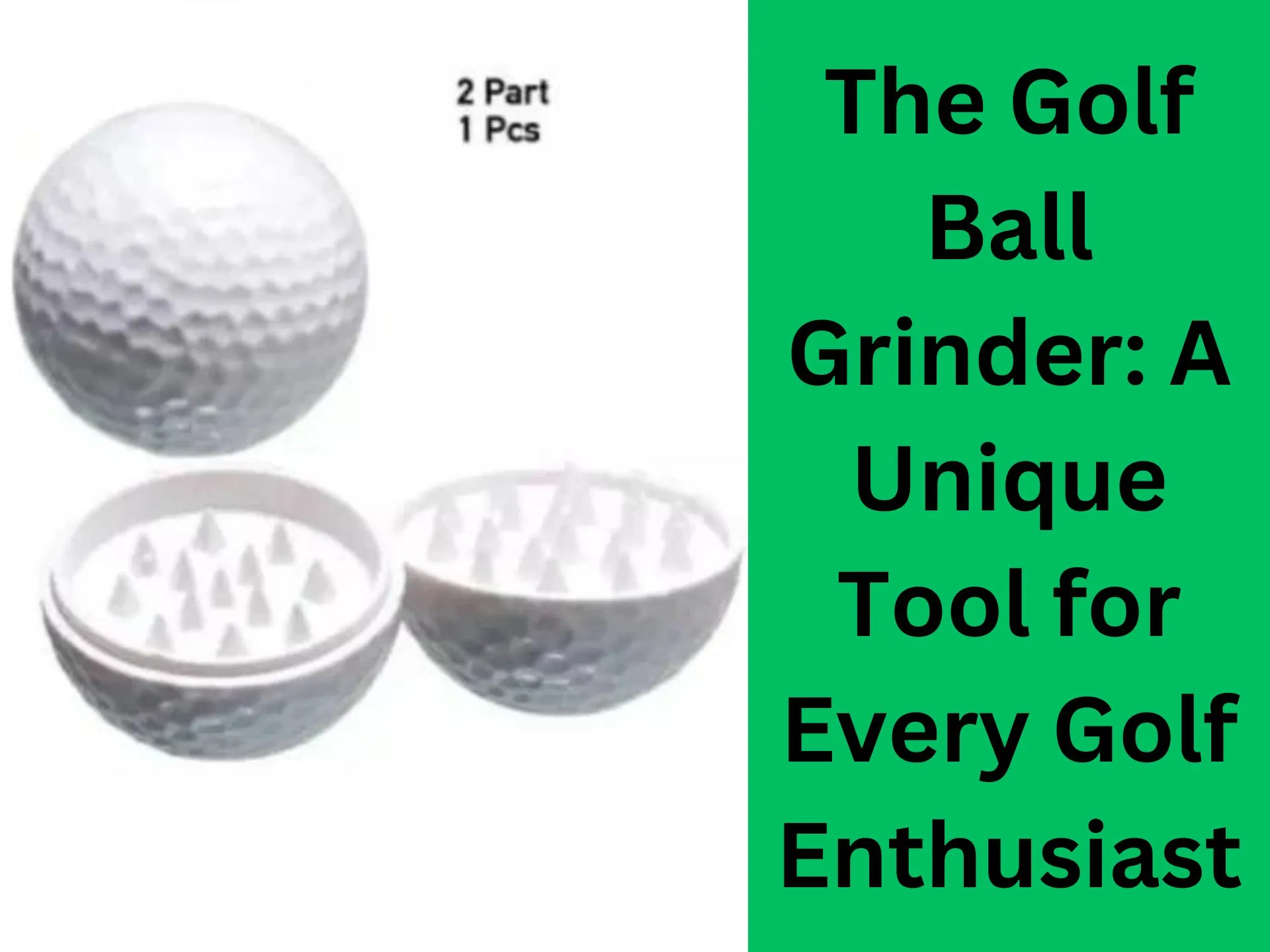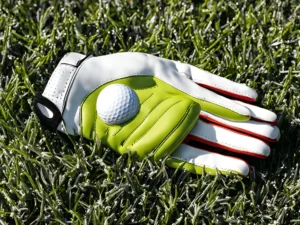Introduction
When you first hear the term “golf ball grinder,” you might picture a hulking machine in a factory, noisily crunching away at golf balls like they’re coffee beans. But, hold on to your golf caps, because the reality is far more exciting (and a lot less noisy). Whether you’re a weekend golfer or a die-hard enthusiast, a golf ball grinder is the secret weapon that can transform your game—and it’s way more fun than it sounds!
What is a Golf Ball Grinder?
- Definition and purpose.
- Description of the components and how it works.
- Different types of golf ball grinders available on the market.
What Exactly is a Golf Ball Grinder?
Imagine a tiny, magical spa for your golf balls. A golf ball grinder is a device designed to renovate used golf balls, giving them a new lease on life. It’s like sending your golf balls on a luxurious vacation where they come back looking brand new and ready to tackle the green with renewed vigor.
Components and How It Works
A typical golf ball grinder consists of:
- Grinding Chamber: The cozy little space where your golf ball gets pampered.
- Grinding Pads: Think of these as the exfoliating scrubbers that polish your ball to perfection.
- Motor: The Engine Driving Your Golf Ball Refurbishment.
- Controls: Settings that let you play mad scientist and adjust the grinding process.
When you place a golf ball in the grinding chamber, the motor powers the grinding pads, which spin around the ball. The pads gently buff away imperfections, leaving the ball as smooth as a baby’s bottom.
Types of Golf Ball Grinders
There are several types of golf ball grinders, each with its own unique personality:
1. Manual Grinders
Manual grinders are the simplest type of golf ball grinders. They are hand-operated, making them a great option for those who enjoy a more hands-on approach.
Features:
- Hand-Crank Mechanism: Operated manually, giving you complete control over the grinding process.
- Compact and Portable: Easy to carry and store, perfect for on-the-go golfers.
- Affordable: Typically the least expensive option, making them accessible to all golfers.
Benefits:
- Customization: You can adjust the pressure and speed by hand, allowing for precise control.
- Exercise: A little bit of manual effort can provide a mild workout, adding a fun element to the process.
Best For:
- Casual golfers who only need to refurbish a few balls at a time.
- Golfers who enjoy the hands-on experience and don’t mind a bit of manual labor.
2. Electric Grinders
Electric grinders take the manual effort out of the equation, making the process quicker and more consistent. They are powered by electricity, providing a hassle-free grinding experience.
Features:
- Motorized Operation: Powered by an electric motor, ensuring consistent performance.
- Adjustable Settings: Often come with adjustable speed and pressure settings for different types of golf balls.
- Efficient: Can refurbish multiple balls in a short amount of time.
Benefits:
- Convenience: Simply plug it in and let the machine do the work.
- Speed: Much faster than manual grinders, saving you time and effort.
Best For:
- Regular golfers who need to refurbish balls frequently.
- Those who prefer a quick and efficient solution without manual effort.
3. Professional-Grade Grinders
Professional-grade grinders are the top-tier option, offering advanced features and superior performance. These grinders are often used by golf shops and serious enthusiasts who demand the best.
Features:
- High-Quality Materials: Made with durable and long-lasting components, such as diamond-coated grinding pads.
- Advanced Settings: Include a variety of settings for precise control over the grinding process.
- Heavy-Duty Performance: Capable of refurbishing large quantities of balls quickly and efficiently.
Benefits:
- Superior Results: Provides the highest level of refurbishment, making balls look and perform like new.
- Durability: it ensuring long-term reliability.
- Versatility: Suitable for a wide range of golf ball types and conditions.
Best For:
- Golf shops and professionals who refurbish golf balls regularly.
- Serious enthusiasts who want the best possible results and are willing to invest in a high-quality tool.
History and Evolution
The Birth of the Golf Ball Grinder
The concept of a dedicated tool began to take shape in the mid-20th century. Inventors, often avid golfers themselves, started developing devices that could more efficiently and effectively smooth out the surface of golf balls.
Unique Aspect: Grassroots Innovation
- Garage Inventions: Many of the first golf ball grinders were homemade contraptions, built in garages and basements by golf enthusiasts.
- Community Sharing: Early prototypes were often shared within golfing communities, with ideas and improvements spreading by word of mouth.
Technological Advancements: Enter the Modern Era
As technology advanced, so did the design and functionality of golf ball grinders. The introduction of electric motors, new materials, and precision engineering transformed these devices from crude tools into sophisticated equipment.
Unique Aspect: Technological Integration
- Electric Motors: The integration of electric motors made grinders more efficient and consistent, reducing the manual effort required.
- Precision Engineering: Enhanced design allowed for more precise control over the grinding process, resulting in better-refurbished balls.
Modern Innovations: Smart and Portable Grinders
In recent years, the evolution of golf ball grinders has continued with the smart technology and portable designs. These modern grinders incorporate features like adjustable settings, automated processes, and even connectivity to apps for tracking performance.
Unique Aspect: Smart Technology
- Adjustable Settings: Modern grinders come with adjustable settings for different types of balls and desired finishes, offering unparalleled customization.
- Automated Processes: Automation has streamlined the grinding process, making it more user-friendly and efficient.
- Portable Designs: Lightweight and portable grinders allow golfers to maintain their balls on the go, whether at home or on the course.
Uses and Benefits
- Practical uses: Restoring old golf balls, improving aerodynamics, etc.
- Benefits for golfers: Cost savings, improved performance, etc.
- Comparison with other golf ball maintenance tools.
Golf ball grinders offer several practical uses and benefits:
Practical Uses
- Restoring Old Golf Balls: Give new life to worn-out balls by smoothing out nicks and scuffs.
- Improving Aerodynamics: Enhance the ball’s flight characteristics by creating a smoother surface.
- Customizing Ball Appearance: Some grinders allow for slight modifications to the ball’s appearance, adding a personal touch.
Benefits for Golfers
- Cost Savings: Refurbishing old balls is cheaper than buying new ones.
- Improved Performance: A smoother ball surface can lead to better consistency and control.
Comparison with Other Tools
Golf ball grinders offer distinct advantages over other maintenance tools, such as:
- Polishing Cloths: Less effective at removing deep scuffs and nicks.
- Chemical Cleaners: Can clean but not refurbish the ball’s surface.
- Replacement: Buying new balls is more expensive and less eco-friendly.
How to Use a Golf Ball Grinder
- Step-by-step guide on how to use it.
- Safety tips and best practices.
- Maintenance and care for your golf ball grinder.
How to Use a Golf Ball Grinder
Using a golf ball grinder is straightforward, but following the right steps ensures optimal results:
Step-by-Step Guide
- Preparation: Clean the golf ball to remove any dirt or debris.
- Set Up the Grinder: Adjust the settings based on the ball’s condition and desired results.
- Place the Ball: Secure the golf ball in the grinding chamber.
- Start Grinding: Activate the grinder and monitor the process, adjusting settings as needed.
- Check the Ball: Periodically check the ball to ensure even grinding.
- Finish and Clean: then Remove the ball and clean the grinder.
Safety Tips and Best Practices
1: Inspect the Grinder Before Use
- Check for Damage: Inspect the grinder for any signs of damage or wear. Do not use the grinder if any parts are broken, or malfunctioning.
2: Wear Safety Goggles
- Eye Protection: Always wear safety goggles to protect your eyes from dust, debris, and any particles that may be ejected during the grinding process.
3: Use Protective Gloves
· Hand Protection: Wear protective gloves to protect your hands from potential cuts, abrasions, and exposure to grinding pads.
4: Secure the Golf Ball Properly
- Proper Placement: Ensure the golf ball is securely placed in the grinding chamber before turning on the grinder. An improperly secured ball can become a projectile.
- Avoid Overloading: Only grind one ball at a time unless the grinder is specifically designed to handle multiple balls.
5: Keep Hands and Fingers Away
· Avoid Contact: Never place your hands or fingers near the grinding pads while the grinder is operating. Use tools or accessories provided by the manufacturer to handle the balls if needed.
Maintenance and Care
- Clean After Each Use: Remove any residue and debris.
- Inspect Grinding Pads: Replace them when they become worn.
- Store Properly: Keep the grinder in a cool, dry place to prevent damage.
- Adequate Lighting:Make sure your workspace is well-lit to see clearly and avoid mistakes.
- First Aid Kit: Keep a first aid kit nearby in case of minor injuries.
Fun and Creative Uses of a Golf Ball Grinder
Golf ball grinders are not only practical tools for refurbishing your golf balls but also versatile devices that can spark creativity and open up a world of fun projects. Here are some inventive and entertaining ways to use your golf ball grinder beyond its traditional purpose.
1. Customized Golf Balls
Turn your golf balls into personalized works of art.
Process:
- Design and Decorate: Use your grinder to smooth out the surface of your golf balls, making them perfect canvases for painting or drawing unique designs.
- Stencils and Patterns: Create stencils and use them to apply consistent patterns across multiple balls.
- Paint and Seal: Once you’ve decorated your balls, seal them with a clear coat to preserve your artwork.
Benefits:
- Stand Out on the Course: Easily identify your balls during a game.
- Personalized Gifts: Create custom golf balls as gifts for friends and family.
2. Artistic Creations
Unleash your inner artist by transforming old golf balls into decorative pieces.
Process:
- Smooth and Shape: Use the grinder to smooth the surface and even shape the balls slightly if needed.
- Paint and Assemble: Paint the balls and use them in various art projects like sculptures, mobiles, or wall art.
Benefits:
- Unique Home Decor: Add a personal touch to your home with custom-made decorations.
- Recycling: Give new life to old golf balls that might otherwise be discarded.
3. DIY Ornaments
Create festive ornaments for holidays and special occasions.
Process:
- Prepare the Balls: Grind the golf balls to remove any logos or marks and create a smooth surface.
- Decorate: Paint the balls with festive colors and add embellishments like glitter, ribbons, or small accessories.
- Hang: Attach a small hook or ribbon to hang the ornaments.
Benefits:
- Personalized Holiday Decor: Make your tree or home decor uniquely yours.
- Fun Family Activity: Enjoy crafting with family and friends.
4. Creative Key-chains
Design stylish and durable key-chains using refurbished golf balls.
Process:
- Miniature Designs: Use the grinder to smooth out mini golf balls or cut regular ones into smaller pieces.
- Drill Holes: Carefully drill a small hole through the ball to attach a keychain ring.
- Customize: Paint and decorate the mini golf balls to make unique keychains.
Benefits:
- Practical and Stylish: Create durable keychains that showcase your style.
- Great Gifts: Make personalized keychains for friends and family.
5. Garden Decorations
Brighten up your garden with colorful, refurbished golf ball decorations.
Process:
- Smooth and Paint: Use the grinder to smooth the balls and then paint them with weather-resistant colors.
- Place in the Garden: Use them as garden markers, decorative stones, or plant pot embellishments.
Benefits:
- Vibrant Garden: Add pops of color and creativity to your garden space.
- Sustainable Decoration: Recycle old golf balls instead of throwing them away.
Conclusion
A golf ball grinder is more than just a maintenance tool; it’s an investment in your game and a gateway to creativity. By restoring and customizing your golf balls, you can enjoy improved performance, significant savings, and a deeper connection to the sport. So, why not give your golf balls the makeover they deserve and see the difference a golf ball grinder can make?
Read More Article:
- The Art of Display: Creating the Perfect Golf Ball Display Case
- Vice Golf Balls Review: Performance, Quality, and Value Explored
- The Golf Ball Slide Mastery: Expert Tips for Optimal Control
- 2024: The Journey of Lost Golf Balls – Beyond the Fairway
- The Average Age of Golfers In Depth Look 2024
- Golf Club Selection Tips to Help You Choose the Right Club
- Golf Gloves Essentials 2024: Boost Your Game
- Discovering Your Game: Golf Ball Washers’ Secret Benefits for 2024




